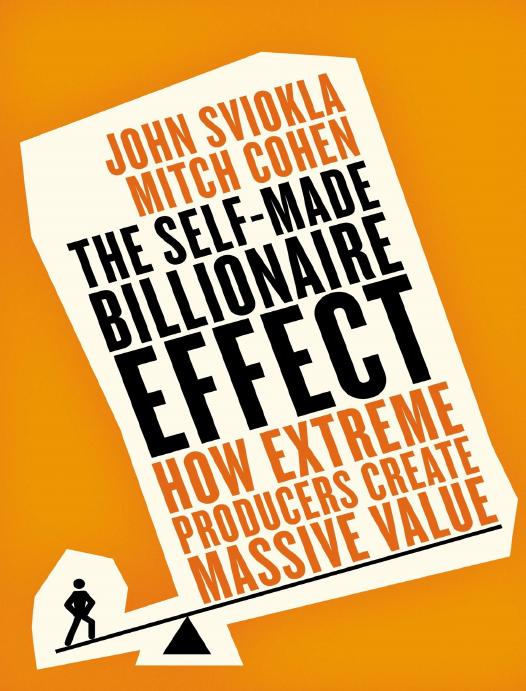The Self-made Billionaire Effect by John Sviokla

Author:John Sviokla
Language: eng
Format: epub, pdf
Publisher: Penguin Group, USA
Published: 2014-11-05T16:00:00+00:00
MAINTAINING THE RELATIVE VIEW AFTER A SETBACK
Stephen Ross, the billionaire founder of the real estate development firm Related Companies, offers another case study in both resilience and the Relative View of Risk. Ross is no stranger to making big moves. Probably his best known project to date is the redevelopment of Columbus Circle in New York City, current home to the Time Warner Center. When Ross first began eyeing the parcel of land at the corner of Fifty-ninth Street and Broadway, it was a decrepit, highly trafficked, disorganized spot with ugly buildings and an outdated street design. Ross saw something different.18
When we met with him in his offices at the Time Warner Center, he reflected on what he saw in the area. “I looked out of my window and I said, ‘Hey, you know, that is the best site in New York. Look at the exposure and all that.’” Stephen Ross envisioned what the site could become: a gateway to the Upper West Side featuring high-end shopping and mixed-use office, residential, and hotel space, with gourmet restaurants and a jazz venue prominently featured in a way worthy of its association with Lincoln Center, New York’s famed performance hall and home to the Metropolitan Opera and the New York City Ballet. He said, “The economy wasn’t there but I saw this as a world-class site and we wanted it.” Today, the Time Warner Center is exactly the world-class site Ross imagined.
Ross seems to have always thought big, though he needed the right circumstances to pursue his big plans. When he was in his midtwenties he relocated to New York from his native Detroit to work for the investment bank Laird, Inc. His job at the time was to structure affordable housing deals for clients seeking investments to use as tax shelters. But Ross had been in New York only a year when he lost his job in a leadership coup.
Ross quickly found a home in the real estate division at Bear Stearns, but there too he met with problems. Though Ross knew his market, he was too junior to close deals on his own. Real estate was a niche area of investment banking at the time and considered very high risk. Ross needed his boss at the table to make deals happen but, according to Ross, his boss treated him in a disrespectful and condescending manner. The situation eventually came to a head with a public confrontation between the two men, and Ross found himself again out of a job, twenty-nine years old and living in New York City, which was as lonely and expensive in the 1970s as it is today.
“Two jobs in a little over two years on Wall Street?” Ross mused when he told us about it. “With that track record, I’m not employable.”
Starting a business is not risk free, of course. But Ross viewed his risks on the employment market as far greater than the ones he faced setting up his own real estate development business. Investment banking is a small world, and the real estate specialty is even smaller.
Download
The Self-made Billionaire Effect by John Sviokla.pdf
This site does not store any files on its server. We only index and link to content provided by other sites. Please contact the content providers to delete copyright contents if any and email us, we'll remove relevant links or contents immediately.
| Consulting | Entrepreneurship |
| Franchises | Home Based |
| Marketing | New Business Enterprises |
| Nonprofit Organizations & Charities |
Pioneering Portfolio Management by David F. Swensen(6078)
Man-made Catastrophes and Risk Information Concealment by Dmitry Chernov & Didier Sornette(5644)
Zero to One by Peter Thiel(5487)
The Motivation Myth by Jeff Haden(4997)
The Miracle Morning by Hal Elrod(4421)
Elon Musk by Ashlee Vance(3852)
The Art of Persistence: Stop Quitting, Ignore Shiny Objects and Climb Your Way to Success by Michal Stawicki(3571)
Unlabel: Selling You Without Selling Out by Marc Ecko(3463)
Delivering Happiness by Tony Hsieh(3280)
Urban Outlaw by Magnus Walker(3236)
Purple Cow by Seth Godin(3069)
Mastering Bitcoin: Programming the Open Blockchain by Andreas M. Antonopoulos(2890)
The Marketing Plan Handbook: Develop Big-Picture Marketing Plans for Pennies on the Dollar by Robert W. Bly(2792)
The Content Trap by Bharat Anand(2776)
The Power of Broke by Daymond John(2768)
Applied Empathy by Michael Ventura(2743)
The Airbnb Story by Leigh Gallagher(2697)
Keep Going by Austin Kleon(2596)
Radical Candor by Kim Scott(2578)
